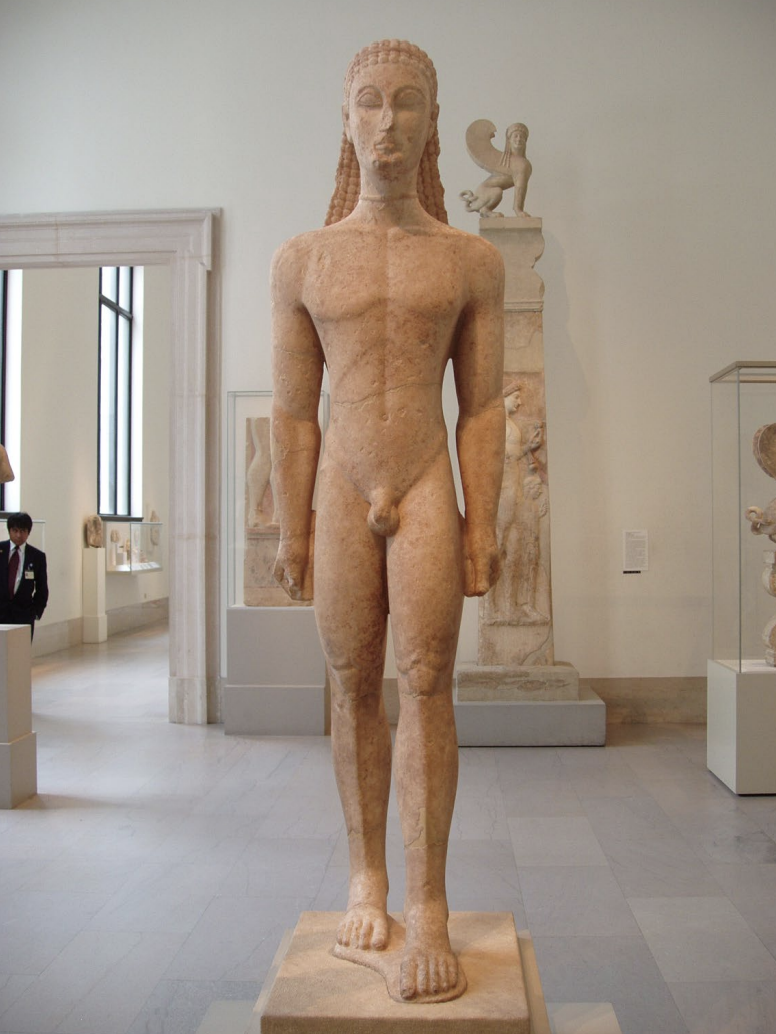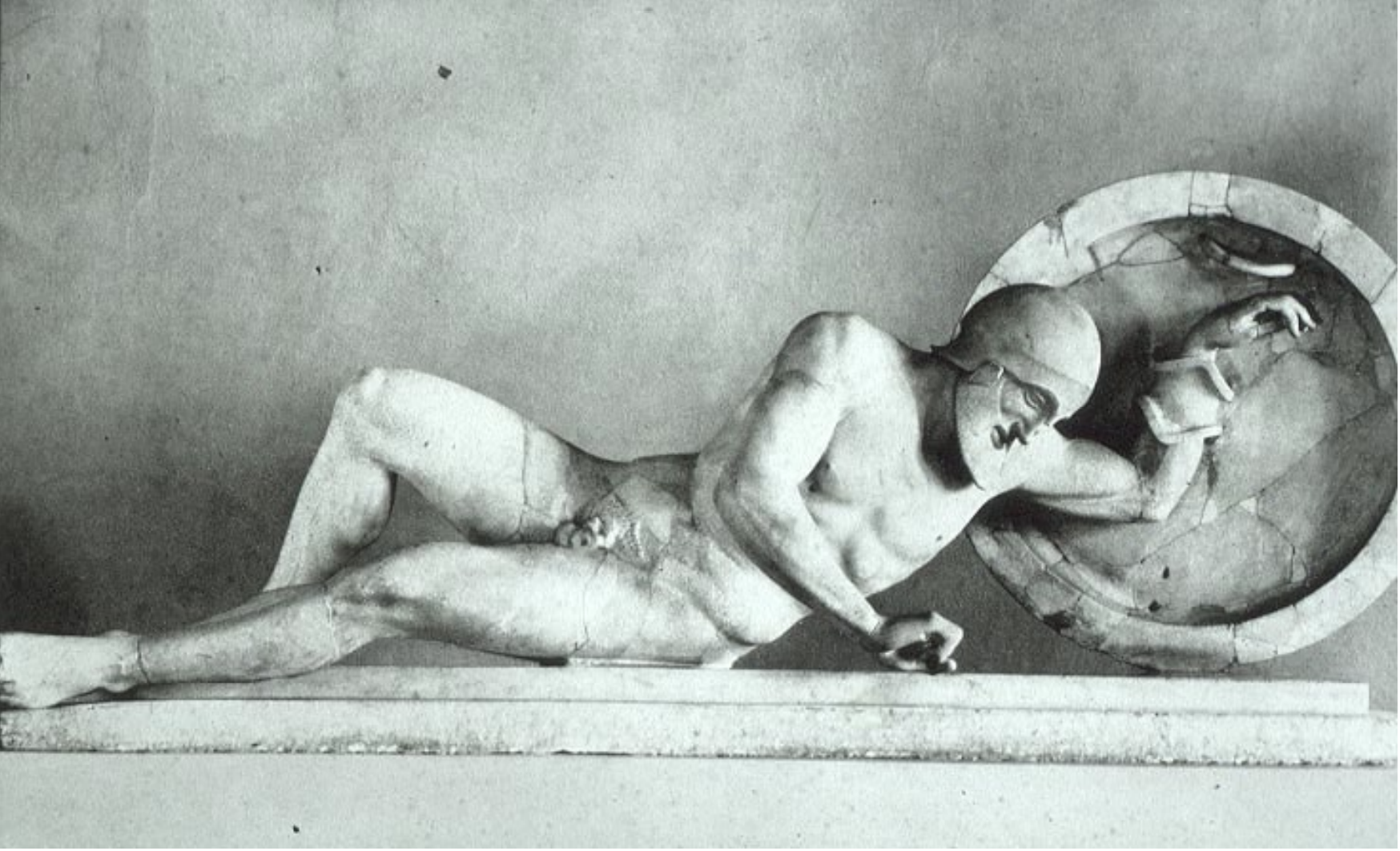The Archaic Period: 600-480 BCE
Greek Geography:
Mountainous Peninsula and Archipelago.
A majority of the population lived near water → very active traders and boatmakers
Utilized the sea/navy for defense to fight battles
The mountainous areas led to divided city states that were unified by mythology.
There are three main periods of Greek Art: Archaic, Classical, and Hellenistic.
One of the most famous things from this period was the Kouros sculpture.
Korous figure ~600-590 BCE (both)

Made to represent an Apollo figure and the ideal athlete—signified by the filet (resembling a hair band) functioning as an athletic headband/sweat band
The Archaic smile (slight smile)—how you might identify Art from this period.
The Archaic braided hair-do with a FILET (resembles a hair band).
“Dying” warrior

The arrow was once in his chest (mid-right hole)
Wearing a beard—a lil’ older, wiser, maybe a commander of some kind
We know it’s archaic bc of this “weird smile”—archaic smile.
There are traces of paint—
the paint used in both is ENCAUSTIC paint which has BEESWAX as its binder
NOTE: the Greeks NEVER wore pants so if you see a sculpture with pants you know it ain’t Greek
→ Which ancient culture influenced the Greeks’ large scale human sculptures?
The Egyptians — the Greeks knew about them because of trade
They took their stance called a power walk
However Egyptian sculptures were in relief (high = more 3d, low = more 2d), and Greek sculptures were in the round
The faces in Egyptian sculptures gud but PROPORTIONS IN GREEK KOUROS FIGURE BETTER—PROPORTIONS WERE VERY IMPORTANT TO THE GREEKS
→ Which sculpture technique was used for the Kouros figure and others?
The subtractive sculpture method — took a block and subtracted from it
gridded the block, implying that they had a reference—these references were usually smaller sculptures
used calpers—wood tool made of two chopstick thingies that could be adjusted to the proportions of